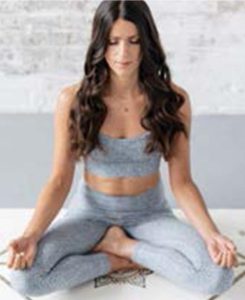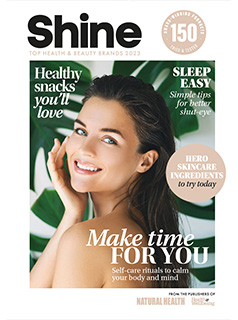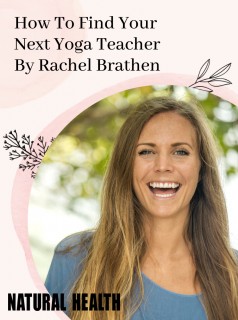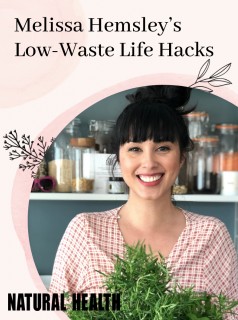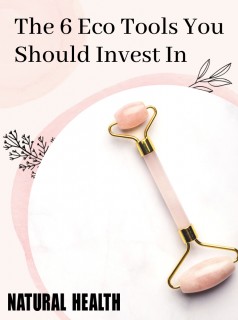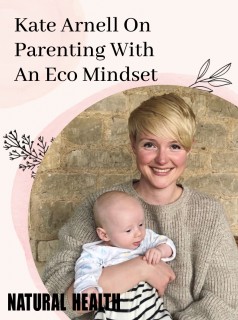We all know about eating in season, but what about living and exercising in season too? Jackie Cosh investigates.
We all know about eating in season, but what about living and exercising in season too? Jackie Cosh investigates.
Julie Hanson, yoga teacher and personal trainer to celebs such as Carol Smillie, Robert Carlyle and Simple Minds singer Jim Kerr, bases her workouts around the seasons. She believes that modern culture stops people having the restrictions they had years ago. “It pushes people to exhaustion,” she says. “We need to listen to our bodies. Seasonal living is all about energy. If you are looking for the perfect exercise programme, you should base it around what nature is telling us to do outside.” “People are becoming more aware,” she says. “As they become more aware of seasonal eating, they discover more about seasonal living.”
Personal trainer Fran Belchner is another advocate of working out in season. “People come to me bored by their exercise routine,” she says. “They need variety, particularly in the UK with our seasons, where there is no consistent climate. If you work on different types of exercise there is less chance of you plateauing and coming to a standstill.” All sound advice, so read ahead to learn how to live your life in harmony with the seasons…
Spring
Spring is probably the most important time of year to be aware of seasonal living. It is the time for a new year, when nature’s energy is rising. It is also a sign to us to do the same thing.
We should be eating fresh green sprouts and crunchy green food with new energy. The food still needs to be warm so stir frying is a good idea. “Spring green soup and plenty of chlorophyll are a good idea” says Julie. “Green food is key.” We should spring clean the house and open windows. “Get rid of broken things and dead things such as plants. Rid the house of any dead energy,” advises Julie. At this time of year the main emphasis in exercising should be on detoxing your life as well as your mind and body. Exercise needs to be something which creates circulation in the lymphatic system, so get things moving in the body. The weather is improving so go for brisk spring walks, or cycle. Breathe in the oxygen.
When choosing classes, go for lots of stretching. Spring is about wakening the body and stretching out of hibernation. “In spring you are adjusting to the change in weather,” says Fran, “and getting ready for the summer. Make the most of it. If you have been exercising indoors during the winter, get some variety and go outside.”
In spring, we start to stay up later as the nights get lighter. Now is the time to put the plans you have been thinking about into action. It is a great time for new starts.
Summer
In summer days are lighter and longer, and temperatures are warmer. It is a time for living life to excess, so energy levels are high, vibrant and growing. Your exercise regime should match this so make sure you include plenty of cardio, running and tennis. Choose full-on exercising such as hill-walking and aerobics classes. Summer time is a time for peak energy; a time to really be going at a fast pace. Fran advises eating lots of raw foods. “Summer is the best time for eating raw foods as the weather is hot. Eat nutrient dense foods and low sugar fruits such as blackberries and blueberries.”
With exercise, cardiovascular is the key, and you should try to get outside as much as possible. “Swimming keeps you cool,” says Fran. “But also try running or jogging. Be creative, and get out as much as possible. There are more hours of daylight so go cycling.”
“Ashtanga yoga or hot yoga are good to practise in the summer. You want to make the body sweat,” advises Julie. You should also spend some time being still and should meditate to balance yourself. Julie says: “That’s why people feel good when they come back from holiday. Their body has benefited from the vitamin D from the sunshine. They have partied and relaxed. All the key components are there and everything is balanced.”
Autumn
Autumn is the time when the weather is beginning to get damp and grey. You need to have balance. “It is damp outside,” explains Julie. “So make inside the opposite. It is a great time for curries and spicy foods. The worst thing you can do is have too many cold foods or iced drinks.” Mucous-bound colds are common at this time of year so watch that your diet is warm enough and that you have enough warm clothes on. Moderate or restrict the amount of dairy products and orange juice you consume. Have plenty of soups. This time of year is grey and so are the foods – parsnips, rice dishes, chestnuts, garlic, ginger and mushrooms. Avoid outdoor exercising. “Go to the gym, do body conditioning, or pilates and move away from cardio-vascular work,” suggests Julie.
“Do lots of strength training,” says Fran. “It builds up the immune system ready for winter.”
Winter
Don’t do what most people do and stock up on unhealthy food, says Fran. “It is still feasible to eat healthily in winter. Opt for curries, soups and lots of root vegetables.” An exercise regime is still possible in winter and it should include slow-paced, repetitive exercise. “This doesn’t mean easy,” says Julie. “Just not rapidly going through the routine. It is a time to focus on yoga, particularly yin yoga. You should be holding postures for longer and they should be deeper, letting the feeling of the stretch come from deeper in the body.”
Julie recommends pilates. “You should be looking at things to pacify you rather than excite you such as chigung, or tai chi. Both are ancient Chinese methods which require a huge centre for strength and concentration.”
Fran recommends Bikram yoga. “It is good for flexibility and stiff joints and ideal for muscles in the cold weather.” In winter nature is in hibernation and the pace is slow. Our regime should follow that. Any exercise should be less strenuous and more restorative in order to restore energy levels. There is a good reason for this as we need to get ready for spring and for new energy and growth. If you don’t store up energy now, you won’t get regrowth and will be more prone to colds and feeling unwell. Meditation plays an important part. “People should try to achieve 10 minutes of meditation each day,” suggests Julie. “The element of winter is water. It is a time to look down the river of life to see where life is going in the year ahead, but with no action being taken until spring.”
An asana for all seasons Try these yoga poses to harness the changing seasonal energies
Spring pose
Standing in warrior 2 pose or virabhadrasana 2, keep feet leg distance apart, bend the front knee to 45 per cent and keep the back leg as straight as possible. Keep your body in alignment, then back lean as you breathe in. Look up at your top fingers, then back to original pose.
Repeat three to five times on each side to kick-start the detoxing process.
Downward dog or adho mukha svanasana. Start in child’s pose and stretch fingers as far away as possible from your bottom and heels. Feel the stretch through your back. Tuck your toes under. Without adjusting hands or feet come straight up into this pyramid position.
Pull your tummy button to your backbone, push down on the heel of the hand, keep your shoulders wide and neck long and stretch your heel to the floor. Stay there for five breaths, then back down to child’s pose.
With feet in wide horse stance inhale, then as you exhale bend your knees keeping them over your toes, lowering hands at the same time. Inhale and come back to straight legs.
Repeat five times.
Keep your hands in front of your rib cage with fingers touching. As you breathe in (through your nose) feel the ribs expanding and fingers separating. As you exhale the ribs return to normal and the finger tips touch.
Keep repeating these deep breaths very slowly 10 to 20 times.
Before you start, set an oven timer or alarm for 10 to 20 minutes, so that you don’t become distracted by how long you have been sitting there. Sit in a comfortable position on the floor or a chair. Keeping the back straight, neck long and shoulders down, close the eyes.
Slowly breathe in through the nose and out through the nose, counting the breaths as you go. Every time you lose count by your mind becoming distracted, go back to number one.





